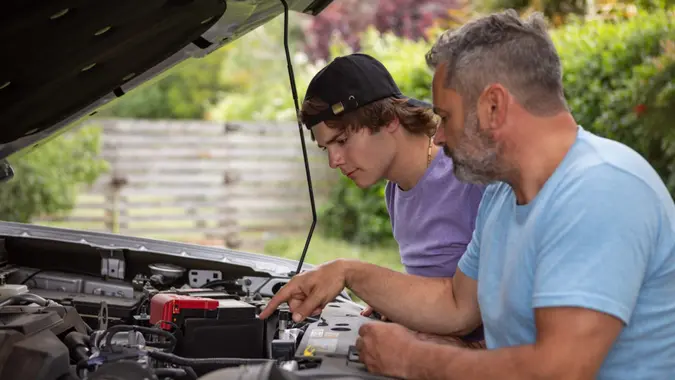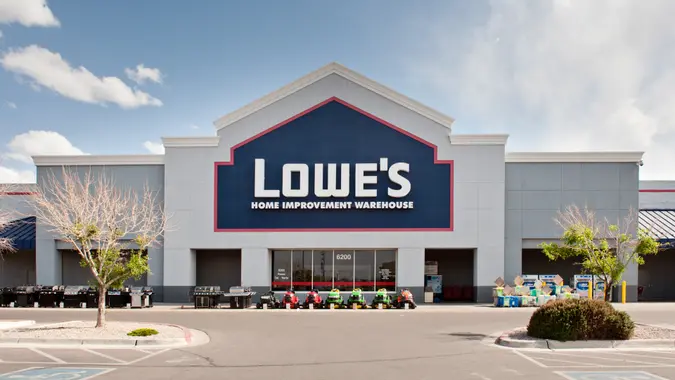My Car Lasted 17 Years: 5 Things I Did To Keep It Running Great

Commitment to Our Readers
GOBankingRates' editorial team is committed to bringing you unbiased reviews and information. We use data-driven methodologies to evaluate financial products and services - our reviews and ratings are not influenced by advertisers. You can read more about our editorial guidelines and our products and services review methodology.

20 Years
Helping You Live Richer

Reviewed
by Experts

Trusted by
Millions of Readers
Most cars are built to last, but only if you treat them right. Routine maintenance can mean the difference between a car that dies at 100,000 miles and one that runs great at 300,000 miles.
GOBankingRates spoke to Zachary McFarlane, founder of Zach Wraps, who shared that he and his dad have kept their 2008 Toyota Tundra running strong for over 17 years, and it’s still going. “I make sure the tedious, cheap, and obvious maintenance is done on time and correctly,” said McFarlane. “That’s 75% of the battle, especially when it comes to brands like Toyota that are built to last and withstand neglect.”
Here are five tips to keep your car in great shape for nearly two decades.
Regular Oil Changes Every 5,000 Miles
Oil is the lifeblood of your car’s engine, and skipping or delaying an oil change can seem like nothing but can turn into something serious down the road. McFarlane sticks to synthetic oil changes every 5,000 miles “on time or early, never late.”
Transmission Fluid Change Every 30,000-40,000 Miles
Many people wait until 60,000 miles or even longer to replace their transmission fluid. McFarlane takes a more proactive approach. “I change the transmission fluid every 30,000 to 40,000 miles or every 2-3 years,” he said. “Some say this is over the top, but we’ve gotten almost 300,000 miles, and the Tundra is still running healthy.”
Discover Next: I’m a Car Expert: 6 Affordable and Reliable SUVs for Families of 4 or More
Coolant and Spark Plug Replacement Every 100,000 Miles
Coolant and spark plugs wear out slowly, but that doesn’t mean you should forget about them. McFarlane replaces both coolant and spark plugs every 100,000 miles. “Sure, you might get away with waiting until 125,000,” he said. “But it’s better to be safe than sorry.”
Regular Brake Maintenance
Brake safety isn’t something McFarlane ignores. He replaces his brake pads as soon as he’s alerted. He also checks them by eye weekly to catch any sensor malfunctions. “I perform visual checks on breaks every other week to ensure that sensors aren’t faulty.”
Yearly or Bi-Yearly Professional Inspections
While McFarlane does routine maintenance to keep his Toyota Tundra running, he schedules professional inspections at least once or twice a year. “A lot of the larger mechanical checks and issues were monitored at the dealership, so highly recommend yearly checks or even bi-yearly checks for anything bigger ticket that might be too much work, like an air injection pump valve replacement.”
 Written by
Written by  Edited by
Edited by 
























